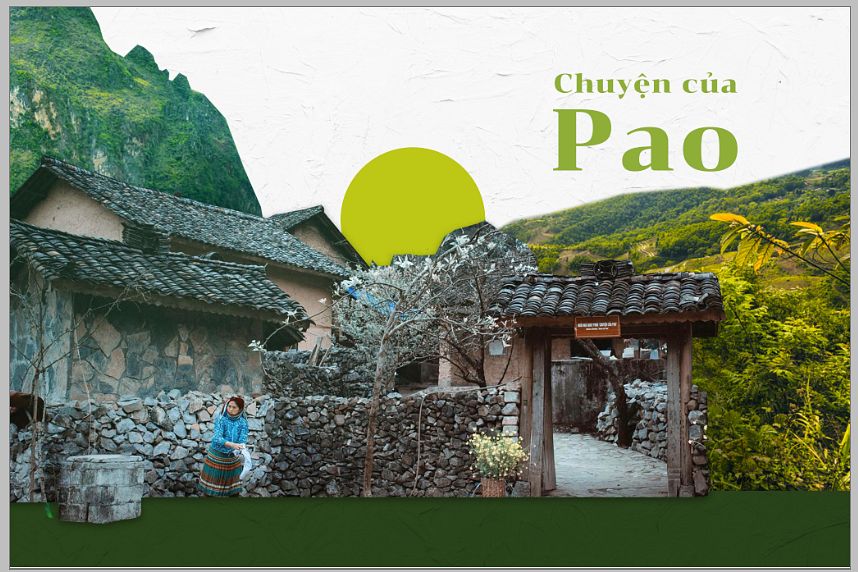The photos don’t do it justice. That’s what you’ll often hear from people who visit Hà Giang to cruise its famed highway loop.
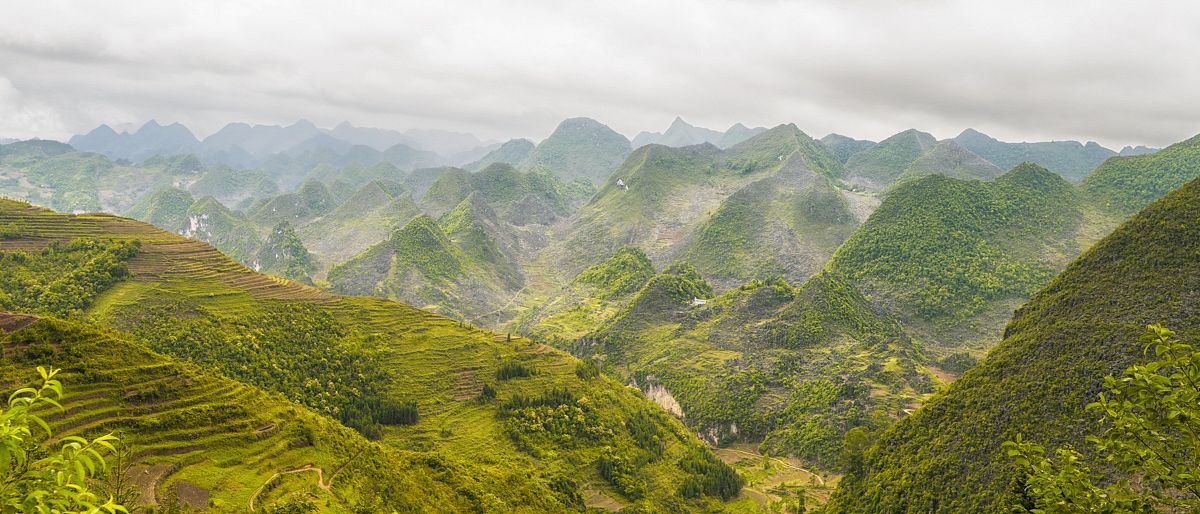
Photo by Alberto Prieto.
Roads ribbon down the sides of unhemmed cliffs and a seemingly endless rise and plummet of mountain peaks skewer the soft, cloud-filled sky. Careening around curves reveals fields that have erupted in flowers and everything is covered in vegetation that exposes the inadequate range of the word green. One can see the stars and taste the rich soil whisked off fresh harvests.
Like photos, my words cannot accurately capture the immensity of the area’s beauty or the perspective one gains while traveling there. Hà Giang was one of the few major tourist spots in Vietnam that I had not yet traveled to during my seven years living here and I was thus eager to experience it this past fall. While I was confident the landscape would astound, I feared finding an area straining under the weight of overdevelopment like Sa Pa, Đà Lạt or Phú Quốc. I was pleasantly surprised, however, to discover that the region is not yet inundated with large resorts, exploitative tour groups or locals who had altered their lifestyles in drastic ways to appeal to outsiders’ notions of adventure.

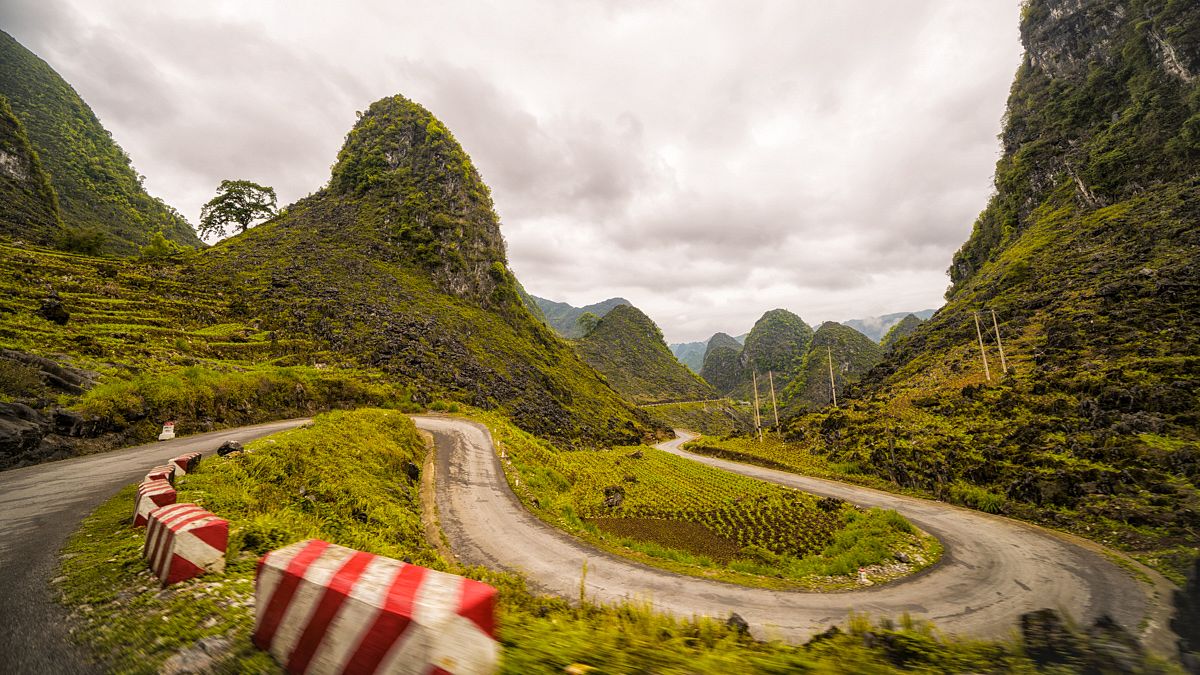
Photos by Alberto Prieto.
While there is of course development in the province that caters to the many who come to travel the loop, it is less invasive than I had expected. Quaint homestays are still operated by families who grew up in the area and prepare delicious meals in rustic kitchens before joining travelers at their living room table to toast homemade rice wine. When I woke early in the morning, I watched farmers lead their buffalo out to graze, elderly women stoke fires beside the stacks of wood collected to last the approaching winter, and throughout the day, people of all ages, occasionally in ethnic minority attire, trudged along the highway; their backs laden with collected crops.
The house at the center of it
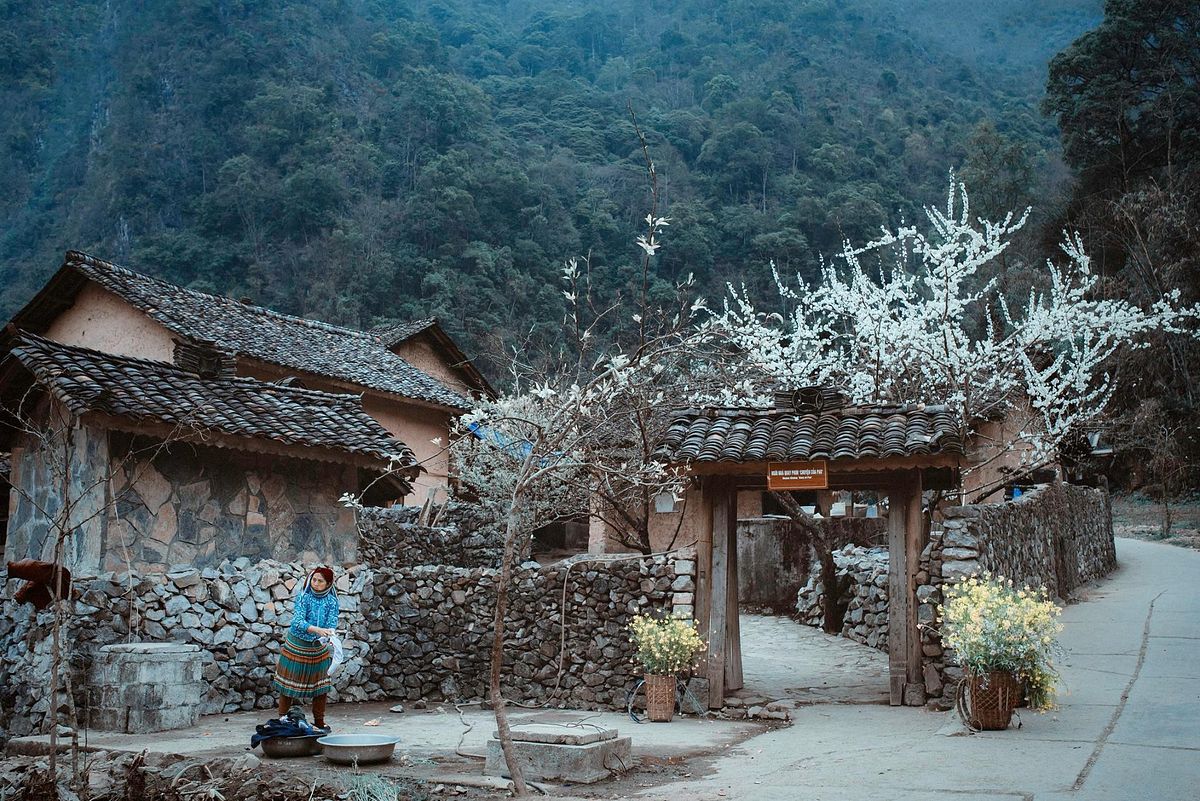
The house. Image via Đài Phát thanh và Truyền hình tỉnh Hà Giang.
Besides the incredible views, harrowing roads, and friendly people I met on the journey, and not counting the truly strange 500 million-year-old trilobite fossil presented on the path up to the Lũng Cú Flag Tower, the site that left the most lasting impression was a traditional H'Mông house in Lũng Cẩm village in Hà Giang’s Đồng Văn District directly off National Highway 4.
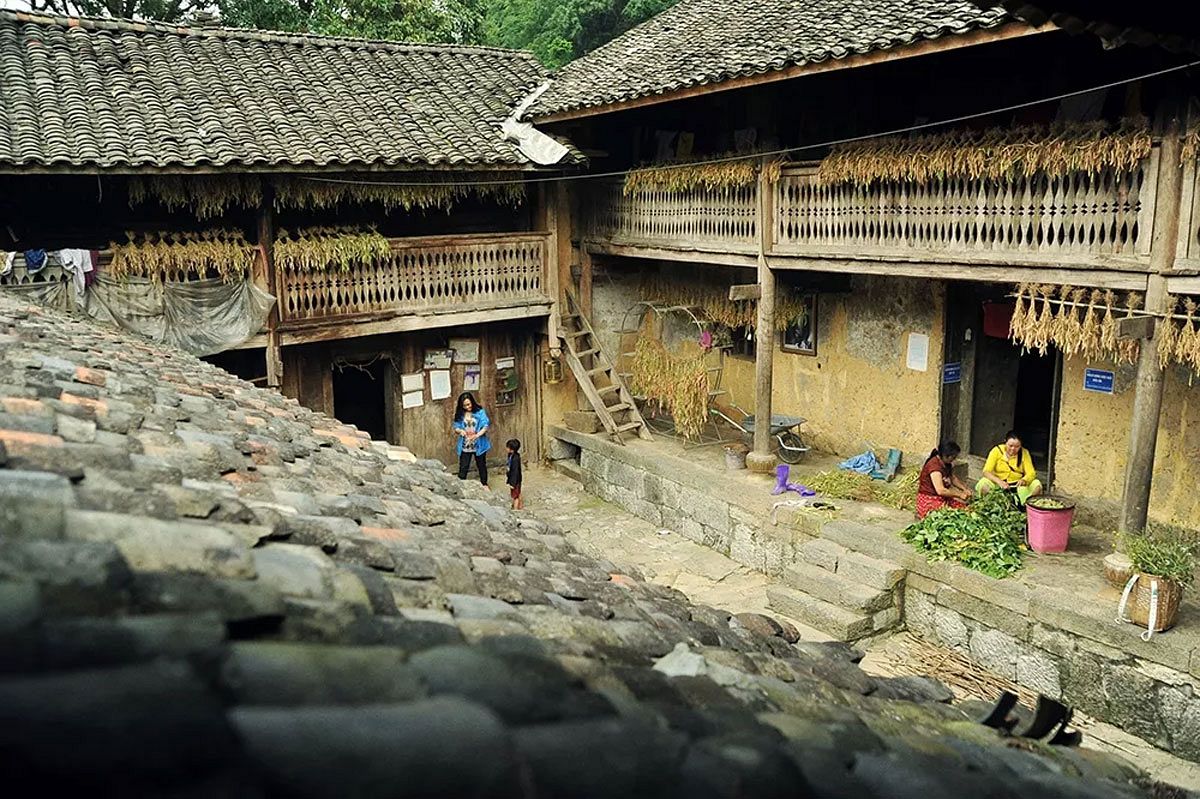
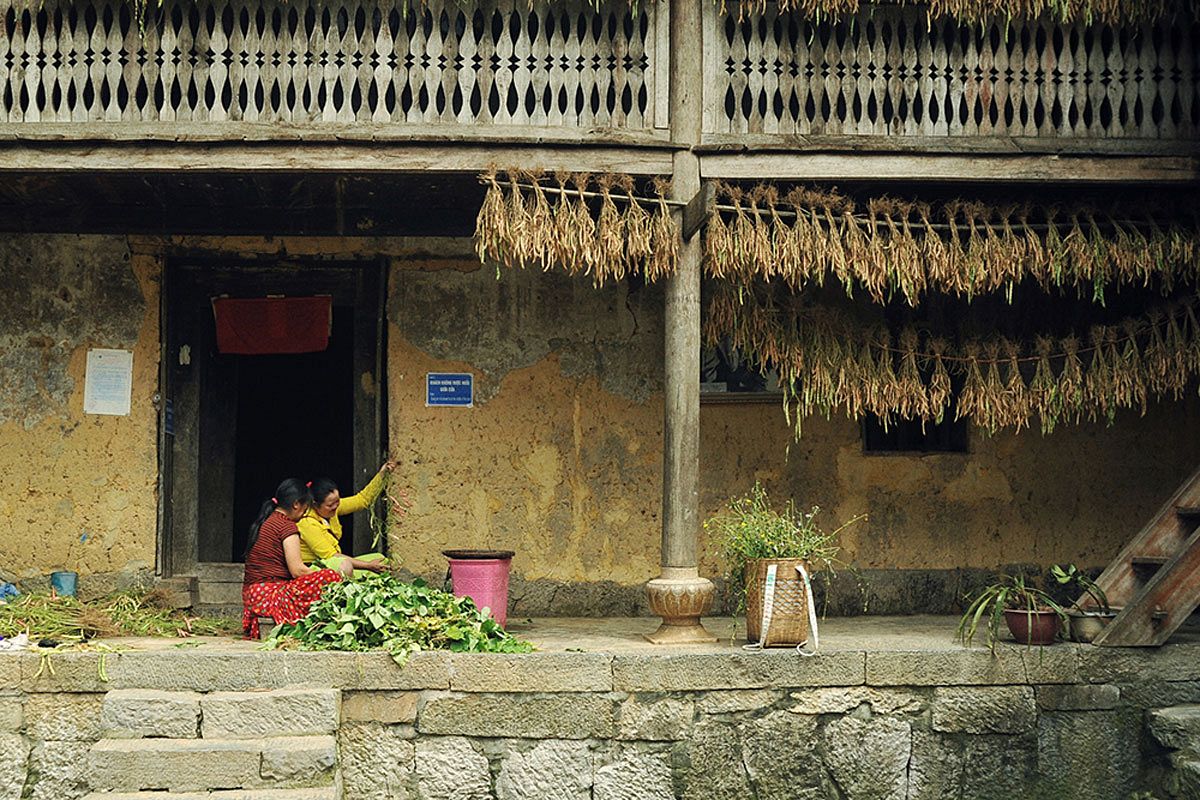
Photos via Bắc Giang Newspaper.
During the colonial period, the area produced mainly opium plants in addition to corn but has since transitioned to rice, buckwheat, flowers, fruits and corn. Built in 1947, this particular house owned by a wealthy H’Mông family provides a good example of traditional architecture with a wooden gate standing in the middle of the stone fence that circles a spacious courtyard surrounded by fruit trees. The home’s foundation, base and porch are made from local green limestone while the support columns and trusses are wooden and the walls are earthen. The large attic space is still used to dry corn and other crops and the four-generation family continues to live and work inside, though their activities now include attending to the hundreds of tourists that visit every day.
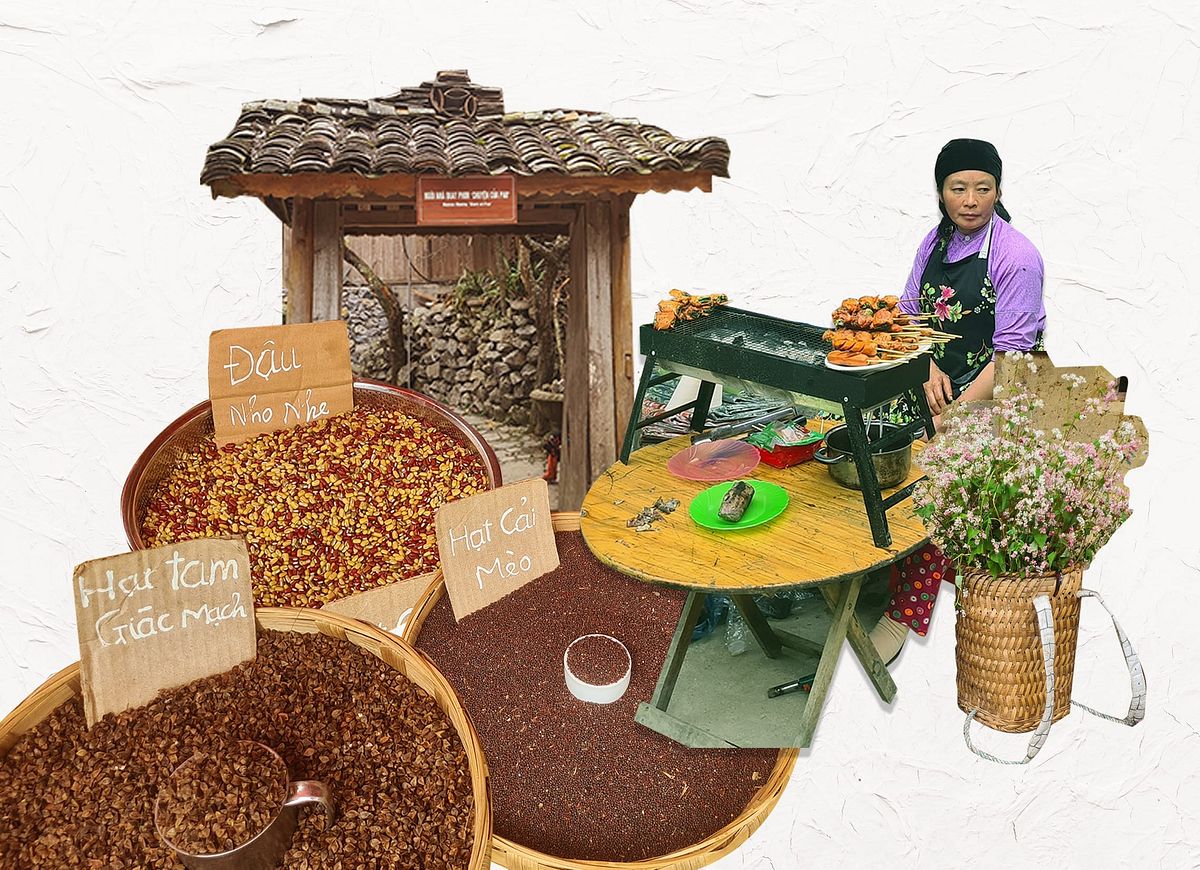
Fields of flowers and various crops grow on the plateau beneath rising gray-faced mountains. To reach the house, one must walk beneath a gate announcing the Lũng Cẩm Tourism Village and pass dozens of stalls selling dried fruits, nuts, herbs, roots, seeds, grains and mushrooms. Intricately sewn H'Mông dresses, blankets and scarves hang beside a woman selling buckwheat cakes. Local beer, shredded bamboo and honey are all sealed in bottles to be transported away and gifted as souvenirs. The tour buses pulled over beside the road during my visit attest to its popularity, and during the peak buckwheat flower season in the fall it’s reported that upwards of 1,000 people visit per day.
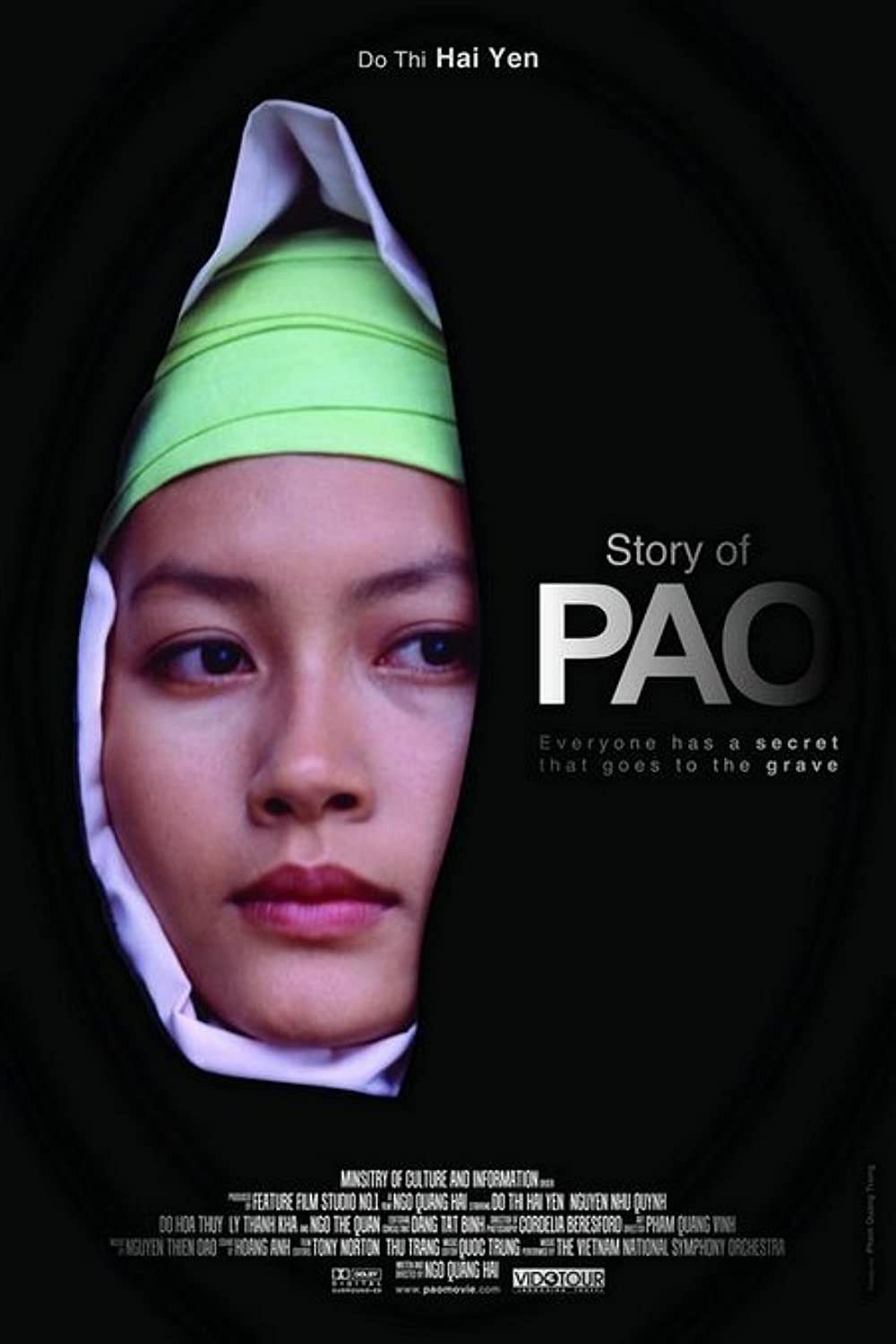
Movie poster via IMDB.
The particular home would not have been established as a tourism site if it were not for the movie Chuyện của Pao (The Story of Pao) which premiered in 2006 and won numerous awards including four Golden Kites and was introduced at the 2007 Cannes International Film Festival. The house at the end of the pathway was used as the main filming locale for the movie.
Chuyện của Pao focuses on the namesake character, a young H'Mông woman raised by her father’s first wife, but born to a different woman in accordance with the culture’s patriarchal traditions and expectations. She is reaching adulthood while navigating her family’s complex unhappiness when tragedy strikes at the movie’s onset.
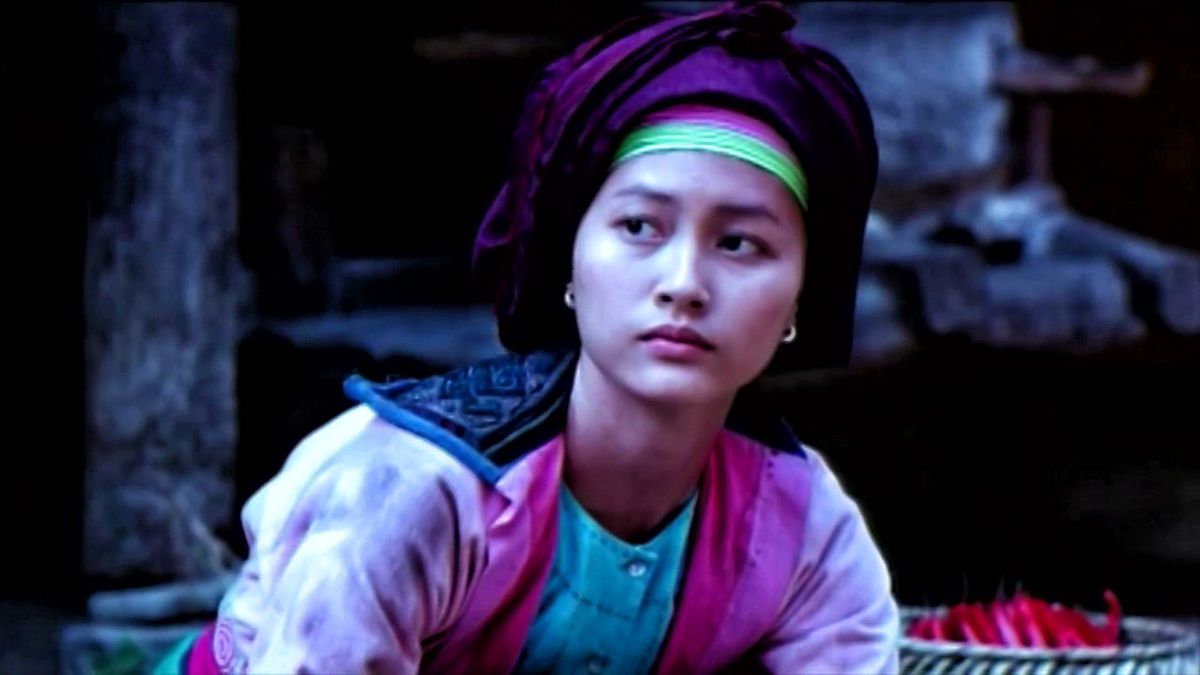
Movie still via Zai Tri.
The difficulty of life in Hà Giang looms throughout the film as characters are constantly plodding through fields burdened with manual labor to scrape together a livelihood. But a gentle lute song drifts through the cold air, bringing a tinge of sweet tenderness to the movie thanks to the joys of youth and the first pangs of the mature romance Pao is pursuing. While technological limitations make the film look older than it really is and fail to capture the area’s natural grandeur, and the slow pacing and art-house style may turn off some viewers, it is a masterful and heartbreaking work of acting and writing that everyone should watch.
When May became Pao
“A cold wind blew in from the mountain, the old pear leaves were falling with a soft rustling noise as they landed on the stone gate.”
This quote is not a description of the movie, but rather the final line from 'Tiếng đàn môi sau bờ rào đá' (The Sound of the Liplute Behind the Fence), the short story by Đỗ Bích Thúy that Chuyện của Pao is based on. Films may represent a more popular form of storytelling than novels nowadays, to say nothing of short stories, but like film industries all around the world, Vietnam has long looked to literature to find core narratives and characters for films, as is the case with Chuyện của Pao.
'Tiếng đàn môi sau bờ rào đá' won the 1998-1999 short story prize in Văn nghệ Quân magazine and has been reprinted in her collections of stories with an English translation forthcoming in a collection of female authors that I was able to get an advanced copy of. Despite the characters all having different names (May becomes Pao in the movie, for example), the fundamental setup of the story is the same. May must face the infrequent arrivals of her biological mother to the home where her father and his wife, the woman that raised her, live. Meanwhile, a young man in the area woos May by playing his lip lute on the other side of her home’s wall. Only 10 pages long, the suspenseful story succeeds thanks to its tight plot and fully realized characters with clear but complex motivations. The unforgiving realities of filial expectations and fates beyond one’s control are exacerbated by the harsh climate where crops must grow on farms where “rocks rose to the surface of dirt that held seeds awaiting germination,” an apt metaphor for how people develop in the story, as well.

Đỗ Bích Thúy (right) in her hometown. Photo via Văn Hoá Doanh Nhân.
Reading 'Tiếng đàn môi sau bờ rào đá' and then watching Chuyện của Pao reinforces my belief that short stories make for better source material for movies than novels. Simply, novels contain too much stuff for a film to hold. Putting aside the challenges of capturing internal monologues and omniscient narrators able to offer sweeping expositions, novels feature too expansive of plots with too many characters. Upon viewing a movie based on a novel, audiences typically focus on what was removed, simplified or altered, as well as what characters and scenes looked different from what they had imagined. While relying on a short story instead doesn’t solve all of these issues, it does help.
Chuyện của Pao doesn’t omit major elements from the story, but rather adds significant ones by including a dramatic third act that is set up by a new opening scene. Faced with more choices to make that occur across a larger span of time and geographic region, the characters reveal different elements of themselves. One will have a different view of Pao’s mother, in particular, and the work’s greater commentary on patriarchy, after watching the film compared to the story. This is not to say that one is somehow better than the other. But rather, the stories they each tell are well suited to their formats and equally pleasing. I’d suggest consuming both if one has any interest in either, though start with the story first.
Given evolving understandings of cultural appropriation and increased discussions of the concept, both here in Vietnam, and abroad, it's worth touching on the fact that the story and the movie are the works of Kinh people yet focus on the lives of H'Mông individuals. Đỗ Bích Thúy was born and raised in Hà Giang in a hamlet consisting of Kinh, H'Mông and Tày families and many of her stories, spread across more than twenty books, focus on the diverse lifestyles and cultures in the region. One of her closest friends, Giàng Thị Thương, became the foundation for May in 'Tiếng đàn môi sau bờ rào đá.' When she became a writer, she was intent on presenting the resilience of the woman who raised but did not give birth to Thương, just like in the story.
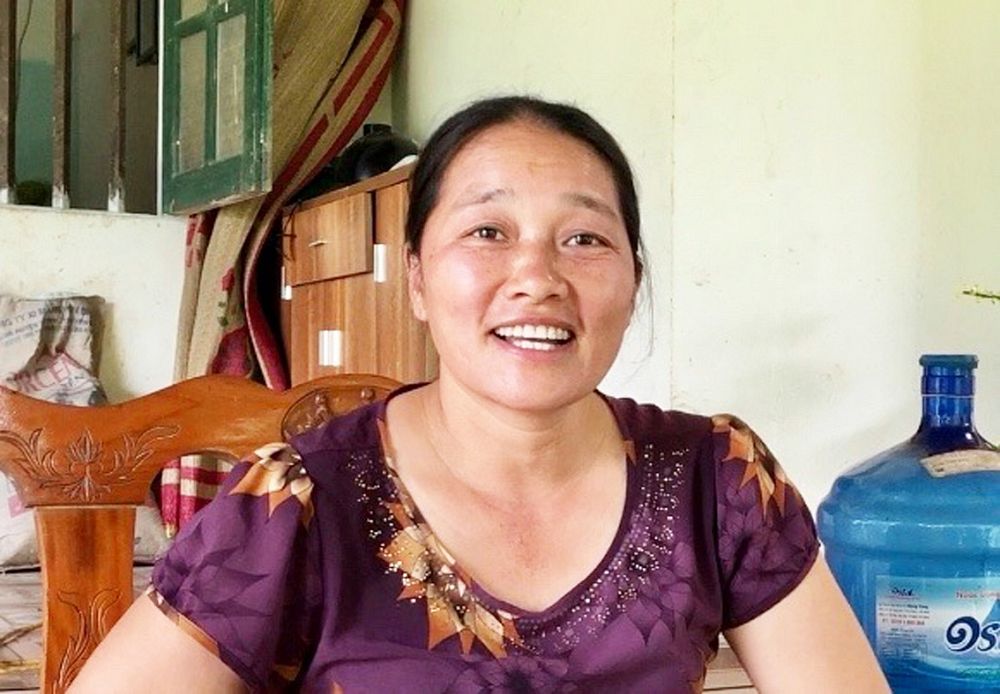
Recent photo of Giàng Thị Thương via Báo phụ nữ.
When I asked Đỗ Bích Thúy about the subject of cultural appropriation, she explained in Vietnamese via email: “I was born and raised among Hà Giang’s ethnic minorities, even though I am not an ethnic minority. I see myself as part of their community and I appreciate and am proud of our traditional cultural values. I use these values in my creative works as a way to promote and introduce the beauty of my community to others; at the same time I also hope that members of my community feel proud of what we have.”
Meanwhile, the film stars Đỗ Thị Hải Yến who was raised in Hanoi while Hải Phòng native Ngô Quang Hải wrote and directed. Đỗ Bích Thúy had no involvement in its making, and she was happy to enjoy it like an audience member without expectations. And while there was seemingly no backlash at the time regarding the film lacking the involvement of people inside the community and culture it focuses on, it is worth noting that a 2022 film titled Khu rừng của Páo (Pao’s Forest) stars a H’Mông actor in the lead role, pointing to the possibility that notions of representation are changing in the industry.
The legacy of Pao and May in Hà Giang
While most Vietnamese tourists are likely familiar with Chuyện của Pao, I doubt that many come to Lũng Cẩm Village because of their appreciation of it. Rather, the spot offers a convenient place to stretch their legs, take some selfies and buy some unique souvenirs. A few photos from the filming days hang on the wall with minimal signage, but otherwise, there is little that would lead someone to watch the movie after visiting. Unfortunately, the story the movie was adapted from is even less present. Visitors have claimed that local tour guides mistakenly told travelers that the film was based on a work by Tô Hoài. A sign even featured a misprint in the story’s title that was recently corrected with expanded details about the writing.
It’s useless to bemoan how infrequently people read. Rather, my energy is better spent being proactive and looking for small opportunities to entice people to pick up a book. Hà Giang, a locale that needs little promotion, is an obvious place to do so. Independent of the story, be it the book or the movie, it's a great place to visit, but with the characters fresh in one’s memory, it takes on a much greater weight. I was able to feel a slightly more significant understanding of the experiences and endurance of the people working and living in the area. Whatever tiny glimpse the works of art afforded me helped provide a sense of connection and appreciation, which is a main reason we travel, after all.
Looking for a happy ending
While the characters end the film and story in very different places, their futures are open-ended in both. Upon completion, the viewer or reader is gifted the opportunity to imagine their futures and fates, one of the most satisfying elements of a work of fiction. I asked Đỗ Bích Thúy what she thought might happen to the characters after the story’s conclusion and she shared: “I always hope my fictional characters have a happy ending in their lives, because even though they are fictional, they carry with them figments of real people living lives filled with more misfortunes than luck, more sadness than contentment.”
If I had read the story when it was first published over twenty years ago, I certainly would not have imagined that a representation of the home May lived in would become a tourist destination. But one can now question if such a third-wall-breaking moment would represent a happy ending for the fictional May and her family. Given the financial resources and opportunities that tourism has ushered into the region along with improved living conditions, it's reasonable to assume the characters’ lives would be better now than at the conclusion of the stories.
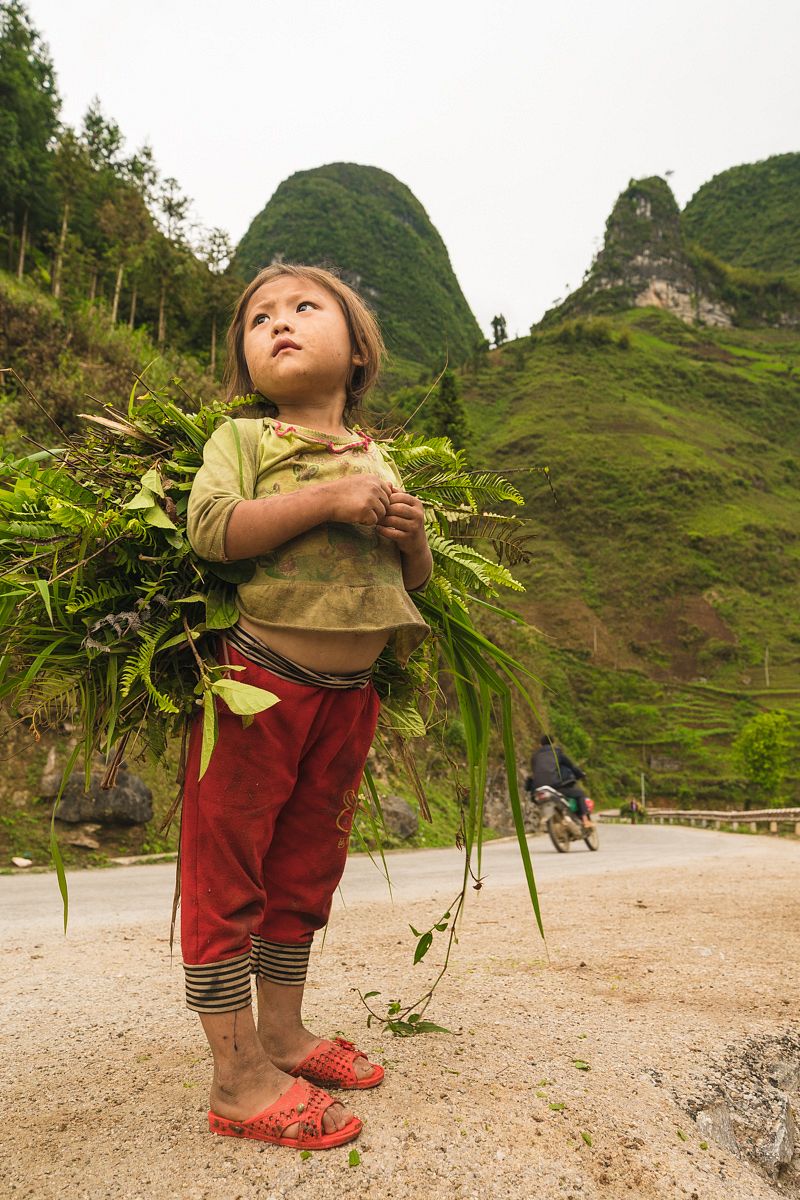
Photo by Alberto Prieto.
As an outsider, it's not my place to offer a definitive judgment about any net positive or negative to the area as a result of increased tourism as seen in places like Pao’s home. I asked Đỗ Bích Thúy about the matter and she explained that in her hometown, “people place their hope on tourism as the most important solution to grow the economy. There’s nothing wrong with that. I was born and raised in Hà Giang so I know firsthand how rough and daunting life here can be. Wherever the wind of tourism sweeps past, the material life of people will change for the better. But along with benefits are more losses. The most obvious loss is transformations in local customs, ways of life, agricultural methods, languages (because they will start speaking Kinh Vietnamese), loss of traditional costumes, architecture, etc. — in short, it’s an erosion of traditional values. Every day, they are going away, little by little… With every step of tourists, a gust of wind will form, sweeping away all the tangible and intangible values, things we once thought are indestructible after years of formation, but are actually quite fragile. They take centuries to create, but only a few decades to be destroyed. And once they’re gone, it’s very hard to get back.”
She continued by stressing the importance of sustainable travel that can balance the preservation of cultures with improving living standards. With that in mind, perhaps the most responsible and satisfying way to travel to Hà Giang is to read 'Tiếng đàn môi sau bờ rào đá' and then watch Chuyện của Pao. Certainly doing so will result in a richer, more intimate experience if one does journey there.

